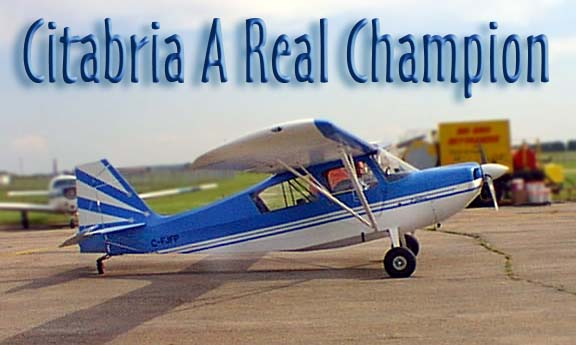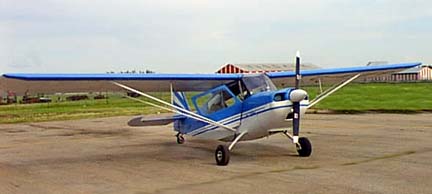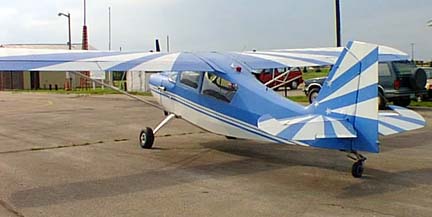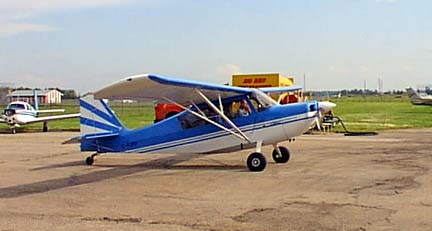

My first encounter with a Champ was with one of its later versions, the Scout. BC Yukon Air Services then (1981) located in Watson Lake, Yukon, had two of these dandy little machines which worked spring, summer and fall for Yukon forestry doing fire patrol. I knew little about the airplane and asked the pilot about it. He was very proud of his machine and explaining the 180 horse power engine made it ideal for their fire spotting activity

In 1970 Champion Aircraft Company merged with Bellanca when for a couple of years a two cylinder 60 horse power Franklin engine was used.
The Scout I mentioned earlier was a utility version of the aircraft, with a 180 horse power Lycoming engine and a gross weight of 2,150 pounds. The Scout sported the straight edged tail we see on a Citabria and was designed for patrol work and agriculture.
Pilots of the Champ tended to have enormous affection for its abilities and were known to do the odd loop and roll with it even though it was never intended for aerobatics. In 1964 Bellanca introduced the acrobatic version of the Champ which they dubbed Citabria, which no doubt you have heard is merely "airbatic" spelled backwards. Fitted with either a 150 or 108 horse powered Lycoming, this machine was the first aircraft certified in the US for aerobatic flight. A beefed up version which could handle +6 -5 G loads was also produced and is called the Decathlon. Bellanca went out of business in 1980.

Most Citabria pilots cruise along at 115 miles per hour, the aircraft has a ceiling of 17,000. It carries thirty-five US gallons of fuel which gives it a range of about 560 miles. Where it really shines is in its handling and performance with a stall speed of only 51 miles per hour, gets off the ground over a 50 foot barrier in 630 feet and lands in 755 feet. Once off the ground it will climb at 1,120 feet per minute. These are about the same performance figures for the Scout. The little Champ on the other hand hustles along at about 86 miles an hour for a range of 310 miles but takes off in 450 feet and lands in 300. In this picture a pilot and flight engineer depart with a full chest of tools as the aircraft can carry a load of 540 pounds.
 The most obvious feature is that this is a
stick and rudder operation with the throttle on the left. This machine has an intercom
and it looks like it has had some major additions to the panel with a GSP (Global
Satellite Positioning) unit in place and a good looking King radio and transponder.
The most obvious feature is that this is a
stick and rudder operation with the throttle on the left. This machine has an intercom
and it looks like it has had some major additions to the panel with a GSP (Global
Satellite Positioning) unit in place and a good looking King radio and transponder.The cockpit and aft seating area is roomy for a small aircraft but the panel is deliberately designed to be small and functional.
The visibility from inside a Citabria is exceptional. The Scout and Decathlon versions have a skylight.
This prairie operated one lands and departs off a grass strip regularly so it does not have pants but the low speed performance is enhanced with the addition of wheel covers.